Different Types of Weighing Scales and Their Functions
April 26, 2022
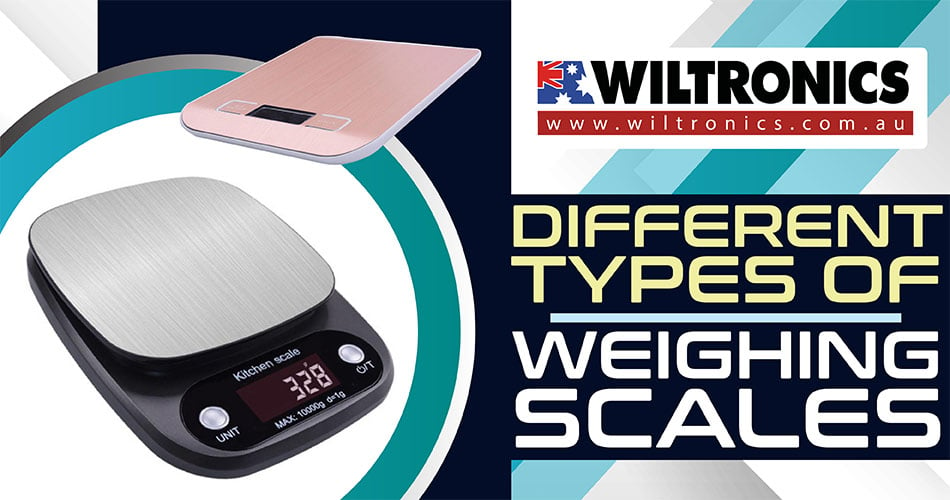
The majority of us have used or have been on a weighing machine one way or another. Although the common term for them is “weighing scales”, the one we use for measuring the body is different from what we use in the kitchen.
Weighing scales come in various forms with different purposes and uses. There are two categories, which are a great starting point in learning the basics.
Another thing you need to know is the difference between a balance vs scale. Read on to learn the principles of weighing scales!
Weighing Scales Working Principle
The terms “balance” and “scale” are often used interchangeably. Both are widely used to weigh ingredients, objects, and people.
Yet various mechanisms allow balances and scales to perform different tasks. Here, we will cover the most commonly used ones.
But before that, let us define what balances and scales are and their distinctions.
Balance vs Scale
Although “balance” and “scale” are used interchangeably, technically, they measure different things. In basic terms, balances measure mass, whereas scales measure weight.
Suppose you are bringing a scale and balance to the moon. The balance will give you the mass, while the scale will be affected by gravity.
A balance determines mass by balancing an unknown mass against a known mass. It is a process that is not affected by changes in gravity.
Gravity will act on both sides of the balance equally. A balance will give the same reading irrespective of location.
Modern balance instruments use a force restoration mechanism. This creates a force to balance the one exerted by the unknown mass.
A scale cannot measure mass directly; instead, it determines weight. This is due to the weighing mechanism and how the weight of any given object is dependent on gravity.
Weight is the force acting on mass that is equal to the object’s mass times its acceleration due to gravity.
Further, scales display weight by measuring a deflection. The force needed to deform the springs is measured and converted into weight.
How do balances and scales work?
A balance works by matching the object to be weighed against a reference weight. Balances are commonly used in precision applications such as laboratories.
Moving on from conventional balances, today we have electronic weighing scales, which are easier to use and more reliable.
A weighing scale comes with springs and other mechanical components. Digital and mechanical scales work the same except for how the readouts are displayed.
On a digital scale, it translates analogue data like how an MP3 player converts music waves into a digital format.
The load cell and strain gauge
Weighing scales come in all shapes and sizes, but these devices share a common component. That is the load cell, particularly on digital weighing scales.
Similar to a transducer, a load cell functions by converting energy into a different form. In a digital weighing instrument, it converts mechanical energy into an electrical output.
Another widely used type of weighing component is the strain gauge. It reads minute changes in electronic resistance.
The readout produced by both will be transmitted to a CPU and interpreted using a display board.
Categories of Weighing Scales
There are two categories of weighing scales:
- Mechanical weighing scales
- Digital weighing scales
All types of weighing scales fall under either of these two.
Mechanical weighing scales
A spring or hanging scale operates on a principle based on Hooke’s Law. The force is exerted on the spring, directly proportional to the distance.
This is represented in the form of the equation F=kx where:
F is the amount of force applied to the spring, x is the distance travelled, and k is constant stiffness.
The weight is applied, and a moving dial shows the measurement. Mechanical scales allow for quick and easy-to-read measurements. However, they are not considered very accurate.
Note: If the spring loses elasticity, it will greatly affect the results.
Digital weighing scales
Digital scales are the standard type used in kitchens or bathrooms. They are often used personally in the home for weighing out portions of food. Or monitoring human weight by standing on the scale.
This type of scale employs the use of a special electrical circuit. As the weight is applied, the voltage within the circuit changes. Then, a processor calculates the weight.
Digital scales can provide multiple units of measure. They tend to be more accurate than mechanical scales.
Note: They are battery-operated or use a power mains supply to function.
Different Types of Weighing Scales
Within these categories, there are a plethora of different types of scales. Below are some common ones in the market.
1. Kitchen Scales
The kitchen scale is one of the popular scales in the market. You probably have seen or used this one!
As the name suggests, it measures food ingredients and items and is ideal in the kitchen. It is commonly used by chefs or serious cooks, including for baking.
It is an excellent measuring tool for everyday cooking, too. Use one at home to get food measurement accuracy.
Check our variety of kitchen scales below:
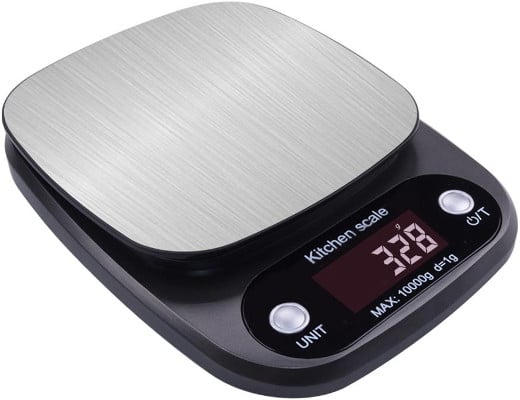
Digital Kitchen Scale – 10kg × 1gm
Product code: ME4520
This digital kitchen scale can measure up to 10 kgs! With a stainless steel pan and backlit LCD, it is easy and convenient to use. Measures from 3g to 10kg in 1g increments.
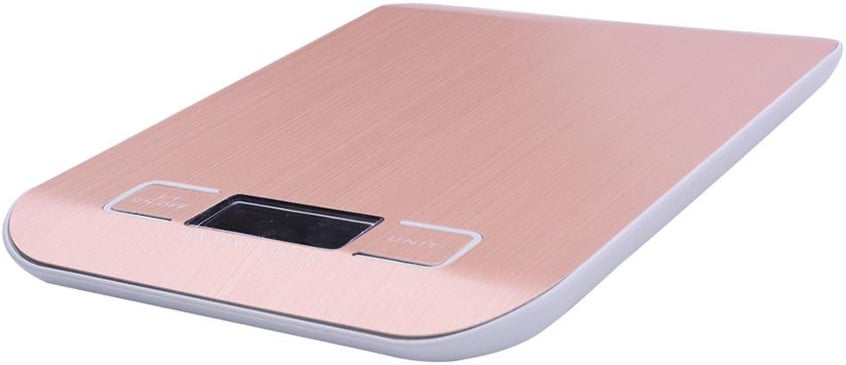
Slim Digital Kitchen Scale – 10kg × 1gm
Product code: ME4521
This slim digital kitchen scale measures up to 10kg in 1g increments. Features an LCD with a backlight as well as an anti-skid base.
Non-magnetic stainless steel platform with 60-second automatic shutdown.
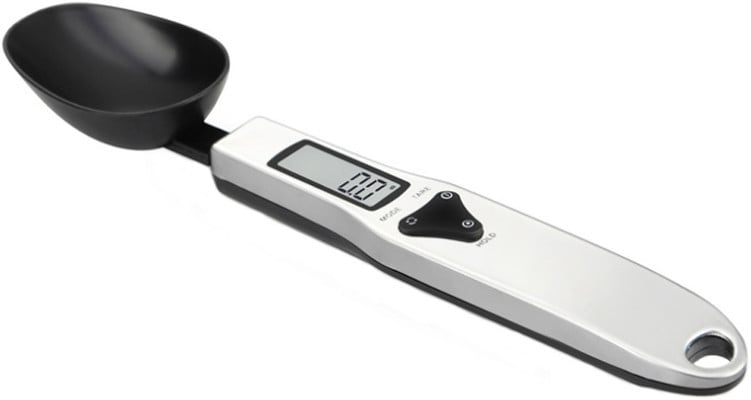
Spoon Scale – Digital, 300g and 0.1g Accuracy
Product code: ME4920
This digital spoon scale makes weighing seasonings, liquids, and coffee beans more convenient. Weighs up to 300g with an accuracy of 0.1g.
It features ABS and stainless steel safety material and a digital LCD for easy reading. Detachable scoop for cleaning and high precision strain gauge sensor system.
2. Health and BMI scales
Generally, health and BMI scales are used in hospitals or clinics to weigh patients. It is also known as the ‘bathroom scale’ as many use it personally in their restroom to weigh their body.
Places like gyms and schools also have this type of scale. Modern units can measure your BMI (Body Mass Index), fat percentage, water ratio, and lean mass.
3. Precision Scales
Commonly used in laboratories, such as pharmaceutical labs. Precision scales measure small samples as they can measure up to a precision of 0.01g.
You can also measure a large container of identical small parts and see how many small parts are there. You will need one for weighing test samples, equipment and chemicals.
Check our offer below:
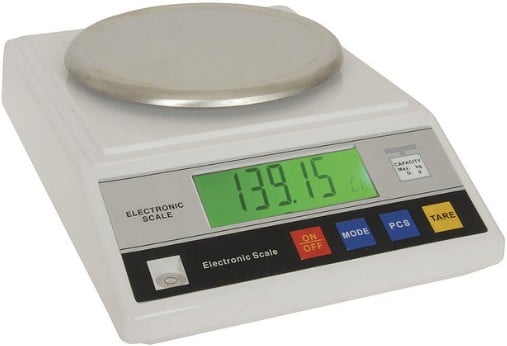
Precision Scale 1000 X 0.01g
Product code: ME7264
This precision electronic scale has a resolution of 0.01g. Supplied with a windshield and a built-in bubble stage to provide optimum precision.
Weighs in grams, ounces, grains, pounds, carats, troy ounces! This unit is suitable for quantity calculation, as it counts pieces by weight.
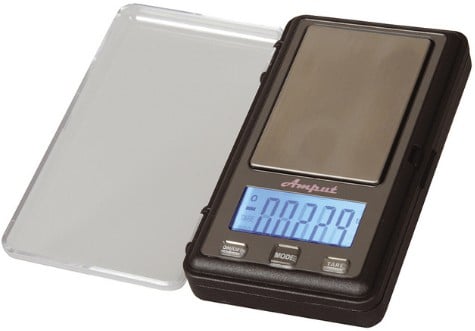
Mini Scale with Backlight – (200 grams)
Product code: ME4610
This mini scale is precise and ideal for a wide range of applications. Measuring up to 200g, the large LCD is backlit and contains a calibration weight of 100g.
The resolution is .01g and weighs in grams and ounces, including carats and pennyweight.
4. Counting Scales
This is great for counting multiple items of the same weight, often used in groceries or supermarkets. It will let you know the number of items you have in the pack based on each item’s weight against the total weight. They are also great for counting small objects like coins or components.
Our range of OHAUS Electronic Balances & Scales includes a variety of balances with parts counting functionality, like the ones below!
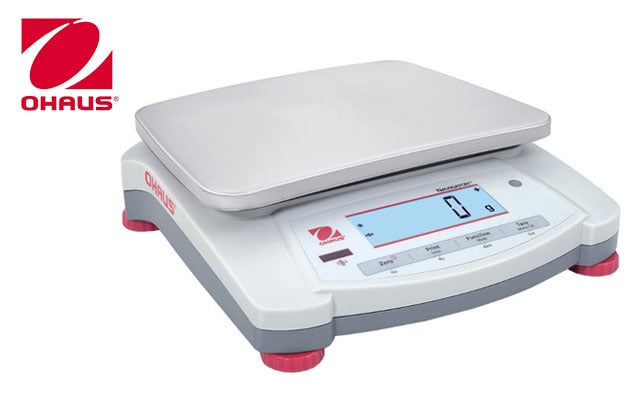
Ohaus NVT2200 Navigator Balance 2200 × 1g
Product code: ME5480
The Ohaus NVT2200 has ABS housing construction with a stainless steel pan. It’s application modes include Weighing, Parts Counting, Percent Weighing, and Checkweighing. Also featuring advanced weighing technology and an overload protection system.
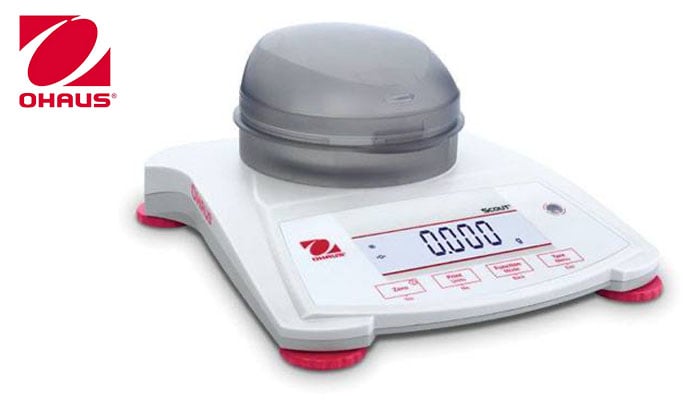
Ohaus SPX223 – Scout 220 x 0.001g with Draftshield
Product code: ME4704
The Ohaus SPX223 Scout portable balance scale provides consistently accurate measurements. It is ideal for laboratory and industrial applications. It comes in a slim, stackable design with optional storage cover. Applications include Weighing, Parts Counting, Percent Weighing, Check Weighing, Totalization, and Display Hold.
5. Luggage scales
Other than going to the airport, you have another option to find out how heavy your bag is: a luggage scale. It is the easiest approach to measuring the weight of your bags.
A luggage scale is a small device that will consist of the scale itself. Plus, with a hook or a strap that you will use to secure your bag to the scale.
Both analogue and digital luggage scales are available.
Luggage Scale with Strap (Grey) – 50kg – No longer available
Product code: JQM7234
This handy luggage scale with a strap is perfect for any traveller. It is lightweight yet measures up to 50 kg!
It includes a hook and strap to weigh just about any luggage. Highly useful for balancing your luggage on the return trip, so no one-piece is overweight!
This scale also provides measurements in kilograms and grams, as well as in pounds and ounces. Bright display with transparent numbers and blue backlight.
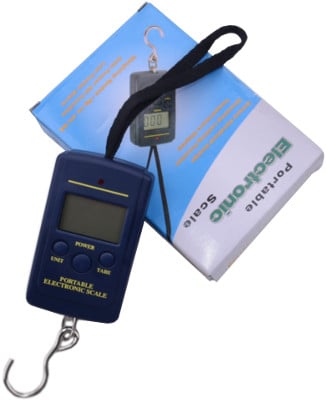
Hanging Scale – Portable, Electronic, LCD Display
Product code: ME4925
This hanging scale is portable and electronic with an LCD. It is convenient and suitable for a variety of uses.
Maximum weight of 40kg. Features a locking feature, low power alarm, and auto power off.
The Bottom Line
Technically, the main difference between a balance and a scale is the measuring format: mass vs weight. As for scales, there are two types, and these are: mechanical and digital.
Under the two categories of weighing scales, you will find a great range of scales for different uses. We hope our few selections will help make your shopping easy!
© Electrotech Brands Pty Ltd 2022


Write a Comment
You must be logged in to post a comment.